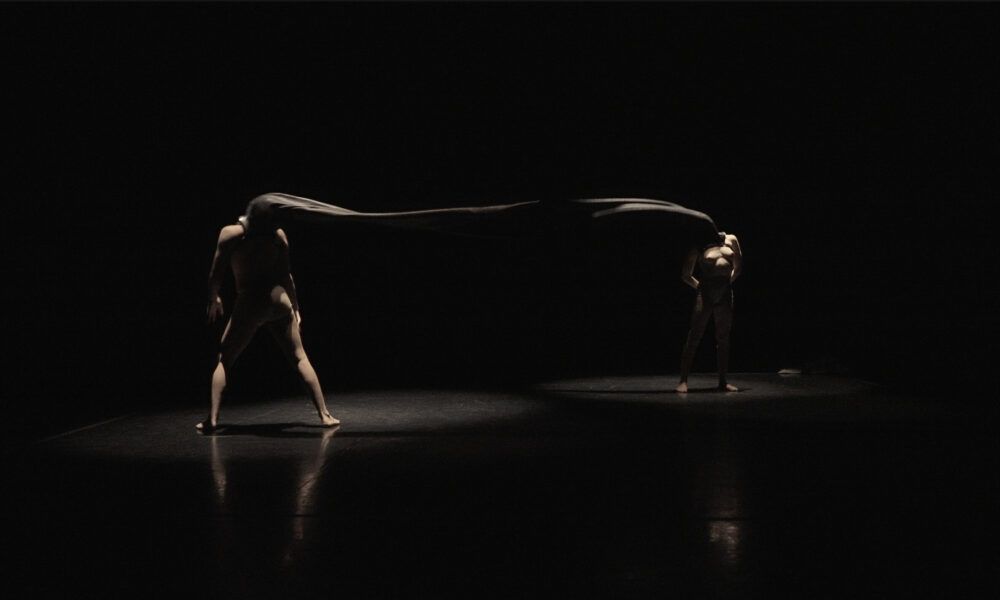Whip is a nuanced dance performance that fuses touch, sound, space, light, and above all, the relation of one human to another. The production, which ran from Nov. 3 to 6, was co-produced by Montreal Arts Interculturels (MAI) and dancer Ralph Escamillan’s performance company FakeKnot, with Escamillan and Daria Mikhaylyuk performing the routine. The show features the two dancers leaping, crawling, and twirling across a 20 by 20 feet square stage—but with one vital twist: They can’t see. Five-foot-long leather hoods obscure their vision entirely. The long, phallic hoods, paired with the intimate choreography, create a sensuous performance that explores the giving and taking of consent.
The two performers start off in beige clothing and stark black headpieces, with leather cylinders veiling their sight. Their hands extend tentatively, and then finally make contact. The silence is interrupted by a sudden music cue as “Every Breath You Take” by The Police begins playing. A sophisticated hand dance erupts, reminiscent of childhood handshakes. The rapidity and synchronism in their movements are especially impressive considering the dancers’ obscured vision, and the tangle of hands speeds up to the point where it becomes difficult to track whose arms are whose.
Whip features substantial give and take; each dancer has their turn in the spotlight, while the other feels their way across the edges of the stage. The lithe and graceful movements are breathtaking and culminate in brief moments of impassioned contact. In the middle of the show, the dancers undress themselves while still heavily enmeshed in each other. During this moment of heightened vulnerability, spotlights on other parts of the stage leave the dancers’ location in relative darkness, creating a sense of privacy in a completely public space.
The next transformation after the removal of clothes occurs when the dancers shake the leather hoods so that they unfurl to extend down to their feet, while still covering the faces of the dancers and preserving their anonymity. The dancers spin their heads several times so that the leather slaps the ground, creating a violent, whip-like snap. This suggestion of danger combined with the actors’ obscured vision is enthralling to bear witness to. While the majority of the dance was marked by suspenseful, independent movement, the concluding portion of the dance was remarkably sensual and intense. The juxtaposition of such elements gave a liveliness to the intermittent moments of touch.
Equally interesting as the contrasting elements of Whip is the artistic process behind such a show. Escamillan, the artistic director and choreographer, described his creation of the show as a reversal of the expected process—that is, he let light, sound, and costume inform the movement. Originating from the four different corners of the square stage, the pulsing music orients the dancers. The soundtrack maintains tension with the pulsing and bellows of a deep base. Stefan Nazarevich, the score’s composer, chronicled his musical journey as a back-and-forth with the dancers. The conversation between technical elements and dance adds yet another dimension of the reciprocity involved in the show’s artistic processes.
Whip showcases the joy of physical relations between two individuals. Yet, as was made evident by the cohesiveness found in the technical aspects, interdependence extends beyond the performers to the sonic cues and expressive lighting. When placed together, the final impact is a breathtaking narrative, from the first uncertain touch to the final unclothed (with the exception of the leather hoods), whip-snapping spectacle.








